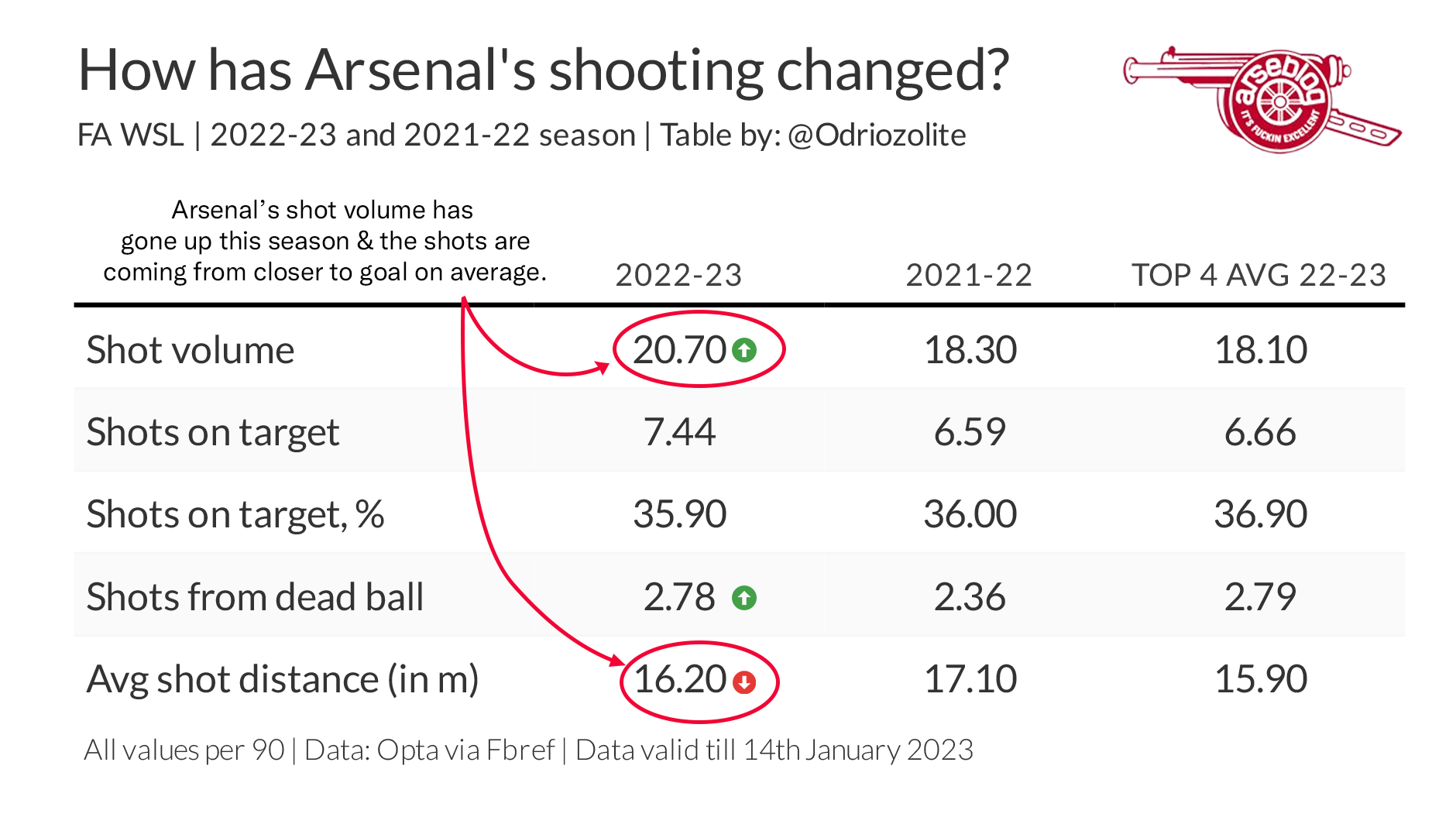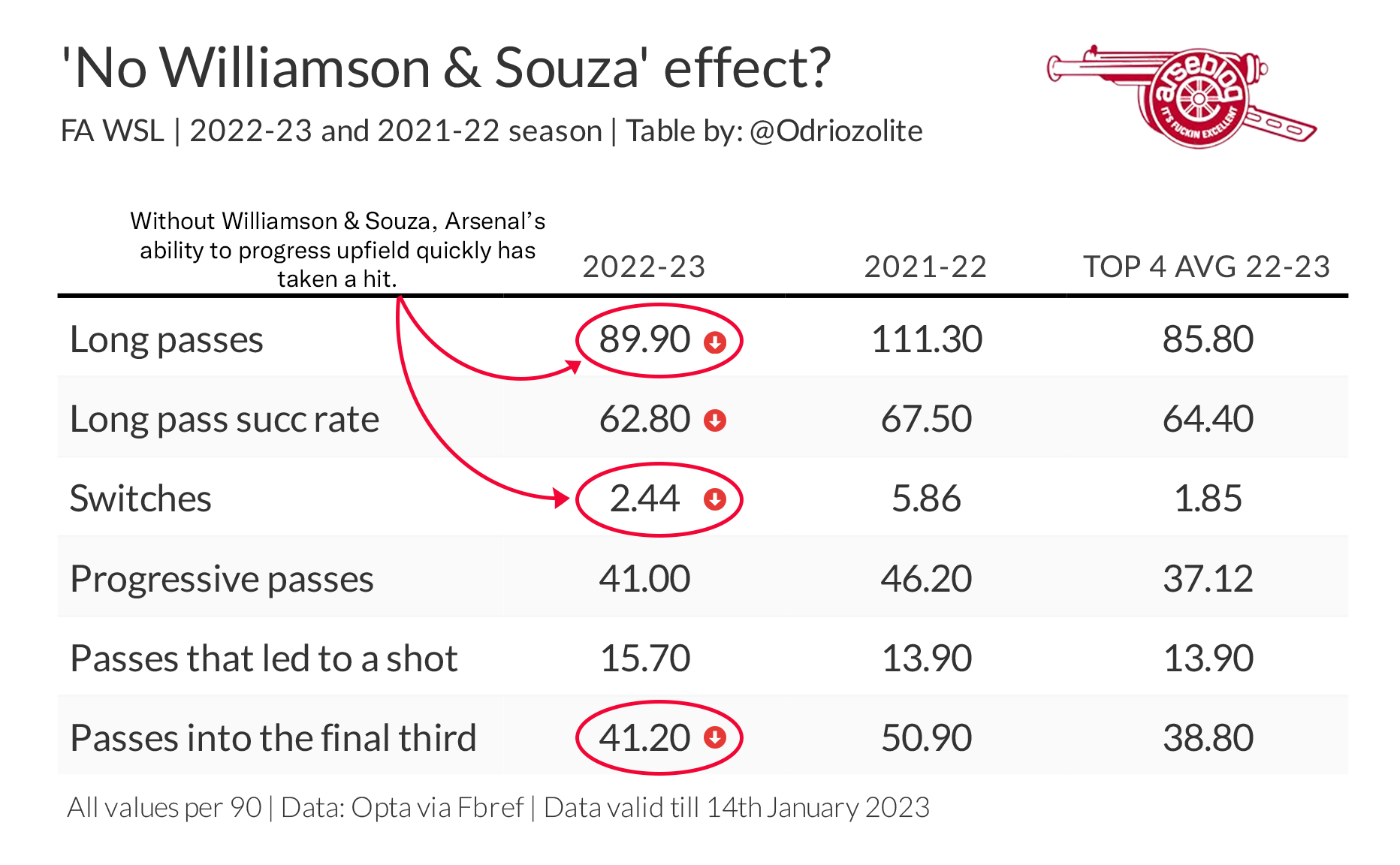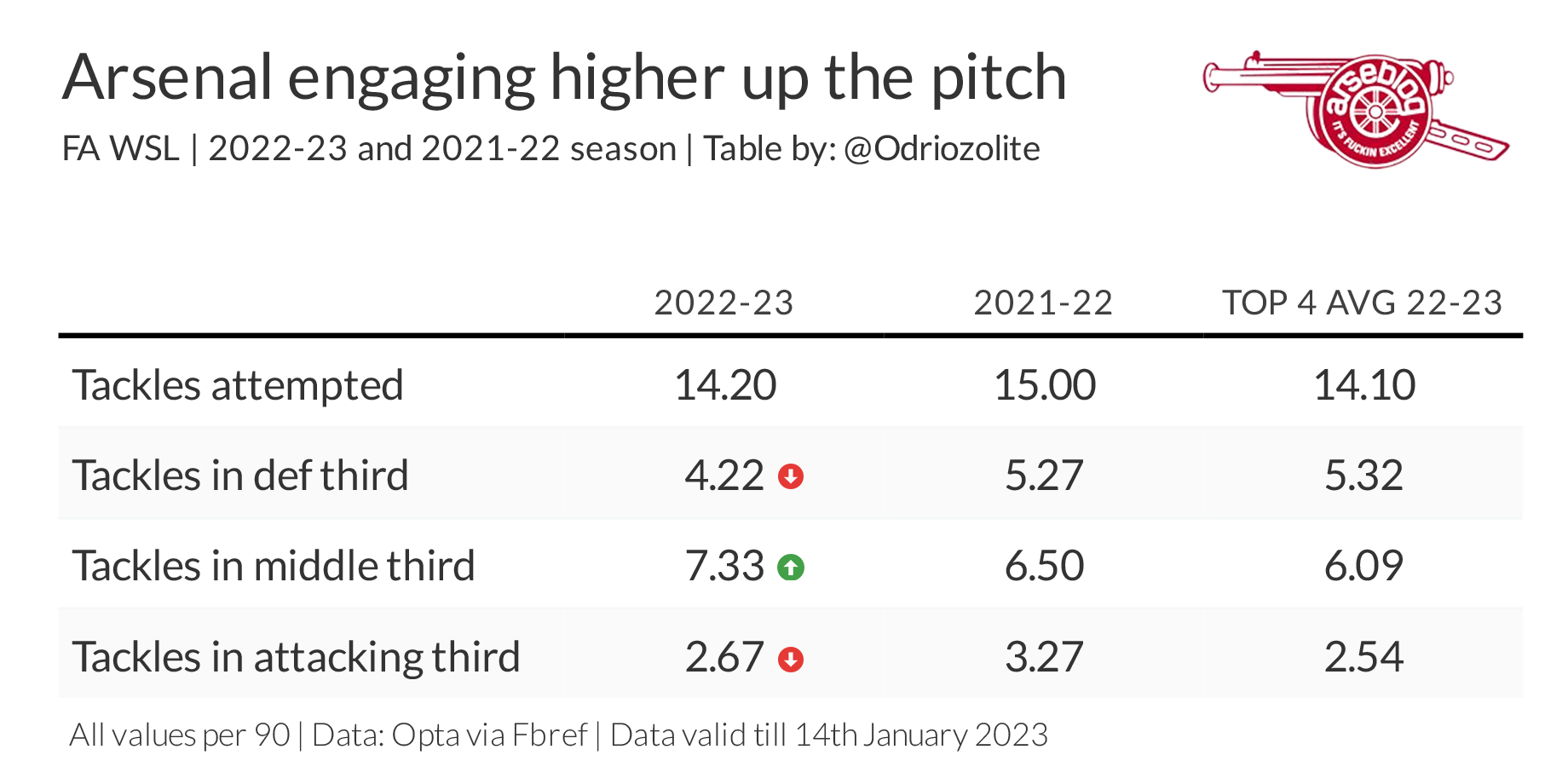We’re at the halfway point of the WSL season for Arsenal- well, not mathematically, we have played nine of the 22 games in the league. The trickier portion of the calendar awaits and that was the case even before the opening weekend trip to Manchester City was postponed until February. Now Arsenal play both of their games against Manchester City and Chelsea and have their trip to Manchester United in the second half of the campaign.
The bottom line is that Arsenal have played one of the “big four” once so far. They played Manchester United, who have finished fourth in the last two seasons, at home and lost. It’s their only defeat of the season but it’s a damaging one. However, that doesn’t tell the whole story of Arsenal’s opening salvo in the 2022-23 campaign.
Injuries have been the main topic of discussion so, while Arsenal’s trickiest assignments are ahead of them, that delay is something of a blessing given the injury situation during the autumn. Arsenal lost their first-choice centre-halves Rafaelle and Leah Williamson in the same week for over two months apiece. They lost their captain Kim Little to a knee injury in late October and Beth Mead to an ACL injury in November. At time of writing, the diagnosis for Vivianne Miedema is not publicly confirmed but the dreaded letters ‘a’, ‘c’ and ‘l’ are going to feature again.
Having just seen their starting centre-halves and their captain return, the Gunners have lost their two most consistent suppliers of end-product. Vivianne Miedema and Beth Mead either scored or assisted 66% of the team’s WSL goals last season and Jonas Eidevall will need to scour the January transfer market to find a player or two who can regularly produce in the 18-yard area.
However, Arsenal have still fared recently well all told. The United defeat was doubly frustrating as the Gunners led on 85 minutes, they have won all of their other WSL games and took command of a tricky Champions League group that included Lyon and Juventus, teeing themselves up as the front-runners in the group with a stunning 5-1 victory away at Lyon on match day one. Let’s delve into the data and see what it is showing us about the season so far.
Arsenal are 2nd in the WSL, three points behind Chelsea but with a game in hand, the teams meet at Emirates Stadium on 15th January. Manchester United are two points behind in third, with City five points back in fourth. The head to heads between the top four are going to be very decisive this season and Jonas Eidevall’s side will need a good record in those games.
Their expected goal difference is +11.5, just behind Chelsea’s at +12.2, Manchester United’s is +5.5 and Manchester City’s is 10.9. A lot of the underlying numbers do not necessarily favour Manchester United but that’s another topic for another article! Let’s see how the shot numbers are tracking compared to the whole of last season with the caveat that Arsenal’s fixture list to this juncture in 2022-23 is skewed generously.

Broadly, the numbers have not moved a huge amount, Arsenal are trending above the big four averages which you would expect given the fixture list. (I have used the top four teams as an average rather than the whole league because the gaps are still too large between the WSL’s haves and have nots for Arsenal to use a league wide average as a satisfactory template).
They are scoring slightly fewer goals and you can map that explicitly to certain games, last season the Gunners beat Reading 4-0 in Berkshire and Everton 3-0 at home, whereas they had to settle for 1-0 on both occasions this year. What about the basic defensive numbers?
| Arsenal 2021-22 | Arsenal 2022-23 | Top four average 2022-23 | |
|---|---|---|---|
| Goals against | 0.45 | 0.55 | 0.78 |
| XG conceded | 0.62 | 0.68 | 0.70 |
| Shots against | 7.22 | 7.0 | 8.03 |
Arsenal currently have the best defensive record in the league and the underlying data suggests that isn’t a question of good fortune. Of course, the caveat about the quality of opposition applies but so too does the fact that Arsenal have done most of this without their two first-choice centre-halves. However, it is in possession where we see how the loss of Leah Williamson and Rafaelle has changed things a little.

We see that the number of touches Arsenal are taking per game are broadly the same as last season but where those touches happen has altered. More are happening in Arsenal’s defensive third and fewer in the opponent’s third of the pitch. I would largely attribute that to a change in build-up without Williamson and Rafaelle.
Quite simply and not unexpectedly, the ball is taking slightly longer to circulate without the quick switches of play we are accustomed to from the first-choice centre-backs. The ball is taking slightly longer to go from A to C, if not necessarily A to B.
The number of passes and the pass completion rates have not changed in a statistically significant way. But look at the massive drop in the number of long passes. That is where the absence of Williamson in particular really scans. You may also notice that it takes Arsenal slightly more passes before they get a shot off now and the ‘passes into the final third’ have dropped off in a big way too.
With Rafaelle and Williamson out, there has been an increased emphasis on defending higher up the pitch to protect the defence. Arseblog News asked Jonas Eidevall about this in December and his quote was revealing when twinned with the data, “Maybe there are times we have gotten away without working on things from a unit perspective optimally but we have had some individual skills on our defenders to solve situations that were not tactically perfect but they have solved them with their game intelligence or their physical abilities.
“This period for us, and I have been really pleased seeing it, is a lot of focus on seeing how the defence works together with our central midfield as units to solve different situations and not making it about individuals.” The graphic below shows that Arsenal have been making more tackles in the middle third of the pitch this season, in response to the loss of the centre-halves.

But what else is different from 2021-22? Well, not a great deal which is not a huge surprise since Arsenal only signed one outfield player in the summer (Lina Hurtig) and she has barely played so far due to injury. Aside from the enforced changes in personnel in central defence, the two players who have changed the starting eleven this season are Frida Maanum and Laura Wienroither. And you can see their paw prints in a couple of key metrics.

Maanum and Wienroither are especially strong in both of these areas and we can see they have brought the team averages up- and in line with the top four averages- in both metrics. I think it is safe to say that Maanum and Wienroither are very much Eidevall players. The latter he brought in in January and the former was purchased by the club prior to the Swede’s appointment but it was a purchase he approved of.
How much the data from the first-half of the season can be extrapolated into the second half is highly debatable, of course. Arsenal have tougher fixtures, they ought to have a different centre-back pairing from January onwards (injuries permitting!) They have also lost Vivianne Miedema to injury and that is enormously significant to their output having already lost Beth Mead.
There are a lot of unknowns that await in the second half of the season, especially as they bed in players like Victoria Pelova and Kathrine Kuhl who ostensibly replace Nobbs and Iwabuchi. Arsenal took four points from City, four from Chelsea and beat Manchester United away last season and they will probably need to match those results at least to win the league.
It’s pretty much impossible to win one of the domestic cups without having to vanquish at least one of City or Chelsea, those big games will hold the key to the second half of Arsenal’s season without doubt. For a long time now, the first half of the season was just about getting through it.
With thanks to Yash for the graphics





was very clear in December after the subs was a decontrol in the midfield, with the new girls the team can keep controlling and creating the whole 90 minutes, even if nobody new came to the RW the girls are learning how to play with the inverted winger and looks very promising. COYG